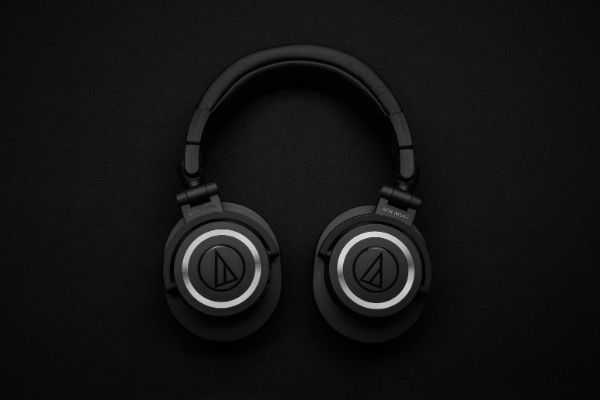5 Tips For When You Have To Mix With Headphones

 It’s not ideal but sometimes you’ve got to mix with headphones – maybe you’re in an apartment with thin walls or on the road in a hotel room and have do a last minute mix tweak or get a rough sent off. Talk to most engineers about mixing with headphones and you’ll hear unanimous advice: “Don’t do it”. To be honest, that’s pretty solid advice. It might seem backwards but headphones are actually less accurate at reproducing several aspects of your music than a decent pair of monitors. Ok, a pair of Grados get pretty close…for $1,700. If you absolutely must mix with headphones, here are some tips to help avoid the biggest mistakes people make.
It’s not ideal but sometimes you’ve got to mix with headphones – maybe you’re in an apartment with thin walls or on the road in a hotel room and have do a last minute mix tweak or get a rough sent off. Talk to most engineers about mixing with headphones and you’ll hear unanimous advice: “Don’t do it”. To be honest, that’s pretty solid advice. It might seem backwards but headphones are actually less accurate at reproducing several aspects of your music than a decent pair of monitors. Ok, a pair of Grados get pretty close…for $1,700. If you absolutely must mix with headphones, here are some tips to help avoid the biggest mistakes people make.
1. Lay Off The Reverb
Part of where your speakers’ sound comes from is the way they fill a room with acoustic information. You don’t have that with headphones, they’re right next to (or in) your years-everything sounds close. It’ll be tempting to use reverb to make things sound deeper and more lush than you should with headphones because of that closeness. The best advice is to keep your mix dryer than you think it should be. A dry mix done with headphones is far more likely to translate well on speakers than one with a lot of reverb and delay. If you’re not careful you’ll run the risk of a washed out sound when you listen through actual speakers that are affected by the acoustics of the room and the distance from the listener.
2. Simple Is Better
Though not used as much these days, effects such as flanging, phasing, and some types of filtering will sound very different with speakers because their positioning will contribute natural phase shifts. If you start messing with phase in your headphone mix you have no way of knowing what will happen when you add speaker distance into the equation. Again, play it safe and keep things simple.
3. Know Your Stereo Image
Headphones are two close points of sound which combine to generate three major spaces: left, center, and right. These spaces will be loudest and things will sound especially huge when panned into these positions. Remember that you have all the space in-between those lobes to use and that headphones will probably sound most impressive with things panned hard. Avoid the temptation to hard pan left or right. Another trick sometimes used is to slightly reduce the stereo field on your master fader when listening through headphones. Reducing your stereo field by -10 on each side mimics the way that the sound from speakers in a room bleed into each other. Just remember not to put it on a master fader that will affect your end mix.
4. Let The Mastering Engineer Do Their Job
You are going to get this mastered, right? When in doubt, cut and boost less. Compress less. Headphones rarely have flat frequency responses, especially those little white Apple earpods and Beats (please don’t mix with Beats!) and generally have very different transient response than speakers. For one thing the drivers are generally smaller and lighter, meaning transients will snap more aggressively. Do yourself a favor and be conservative with EQ and compression. If you EQ too far the mastering engineer will have to EQ the other way, possibly affecting other aspects of the mix. It’s best if you don’t compress the stereo bus at all. A good mastering engineer will be able to turn a solid mix into a great mix if you give them room to do their work. Their familiarity with their monitors and room will help compensate for your lack of monitors and room in the mixing process.
5. Use Multiple References
The same rules that apply to mixing with speakers apply to headphones: the more references you have the better. In addition to your standard headphones (say Shure SRH-440’s) or check on something different (Etymotic HF5’s) and don’t forget consumer-grade headphones like plain white Apple Earpods! If it sounds great on all of these, you’re more likely to have a solid mix. Also, remember to always do the car test. Even though you might not be able to turn up the mix in your room, you can connect an audio player to the radio and crank it up in a car.
If there’s any way you can mix on real studio monitors, do it. If not, follow these tips in a pinch and you might be able to pull a great mix with your headphones.

